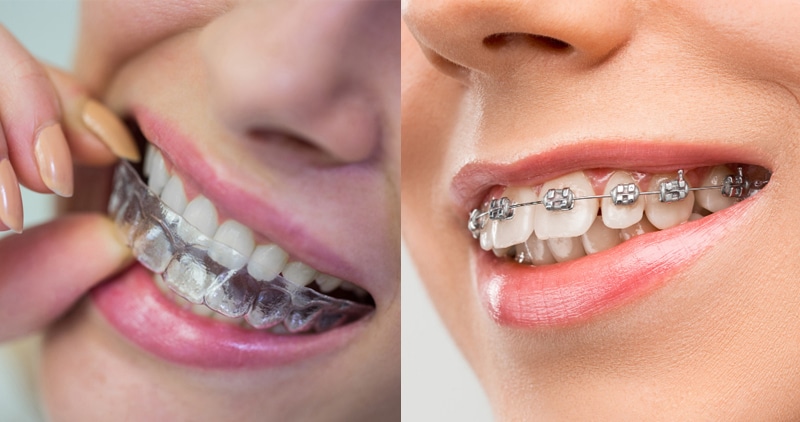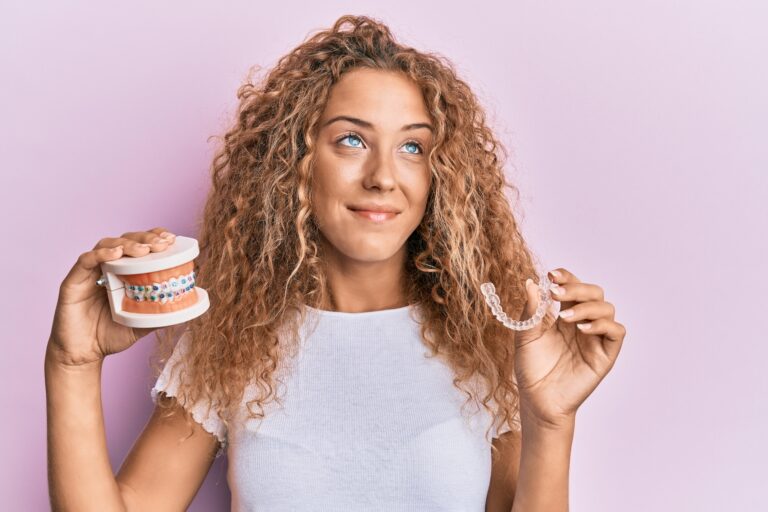Orthodontic care has come a long way. Gone are the days when metal braces were the only solution. Today, teens (and their parents) have more options than ever, and choosing the right one can feel overwhelming. So, what works best—traditional braces, clear aligners, or a combination of both?
In this post, we break down the benefits, drawbacks, and real-life considerations of each option so you can make the smartest choice for your teen’s smile.
Why Teens Need Orthodontic Treatment
Let’s start with the basics. Orthodontic treatment isn’t just about straight teeth. It’s about:
- Fixing bite issues (overbite, underbite, crossbite)
- Creating room for crowded teeth
- Guiding jaw growth
- Preventing future dental problems
Early to mid-teen years are ideal for treatment because the jaw is still developing, making it easier to guide teeth into better positions.
Orthodontics also plays a big role in boosting confidence. A straight, healthy smile helps teens feel more self-assured in social settings, at school, and during extracurricular activities. The right treatment can improve both oral health and self-esteem.
Option 1: Traditional Braces
What Are They?
Traditional braces use metal brackets and wires to move teeth over time. They’re the most familiar option and still one of the most effective.
Pros:
- Highly effective for complex cases: Works well for severe misalignment or bite issues.
- No discipline required: Unlike aligners, they stay on 24/7.
- Customizable: Teens can personalize them with colored bands.
Cons:
- Noticeable: Not the most discreet option.
- Maintenance: Food restrictions and more effort in cleaning.
- Occasional discomfort: Wires can poke, and brackets can irritate cheeks.
Braces are time-tested and often necessary for more complicated cases.
Option 2: Clear Aligners
What Are They?
Clear aligners are custom plastic trays that fit snugly over the teeth. They’re removable and nearly invisible.
Pros:
- Discreet: Almost unnoticeable, which many teens prefer.
- Comfortable: No brackets or wires to irritate the mouth.
- No food restrictions: Remove them to eat and drink.
Cons:
- Requires discipline: Must be worn 20-22 hours per day.
- Easily lost: Can be misplaced if not stored properly.
- Not ideal for all cases: May not correct more complex issues without supplemental tools.
Aligners are great for teens who are responsible and whose orthodontic needs are relatively mild to moderate.
Option 3: Hybrid Treatment (Braces + Aligners)
What Is It?
Some orthodontists use a mix of both methods. For example, braces might be used for the initial phase to handle complex movements, followed by aligners for finishing work.
Pros:
- Efficient and flexible: Braces handle the heavy lifting; aligners refine the smile.
- Better compliance in the second phase: Teens are often more invested after seeing early results.
- Reduced time in braces: A shorter duration with brackets can be a big motivator.
Cons:
- It may cost more because you’re essentially using two systems.
- Still requires discipline: Aligners still need to be worn properly.
Hybrid treatment is ideal when you want both precision and aesthetics without committing fully to one method.
Which Option Is Best for Your Teen?
There’s no one-size-fits-all answer. Here’s what to consider:
1. Complexity of the Case
- Severe misalignment or bite issues? Braces may be better.
- Minor crowding or gaps? Aligners could work well.
2. Your Teen’s Habits
- Are they organized and consistent? Aligners might be a good fit.
- Not great at keeping track of things? Braces are likely the safer bet.
3. Aesthetic Preferences
- If appearance is a big concern, aligners win.
- Some teens embrace braces as a rite of passage and like the personalization.
4. Budget and Insurance
- Cost varies depending on treatment length and complexity.
- Many clinics offer payment plans and accept insurance, so check your options.
Also, talk to your teen. Involving them in the decision process gives them a sense of ownership and can increase their commitment to the treatment.
What Teens Think
It’s not just about what parents want. Teens are more likely to stick with a treatment they feel good about. Here’s some real talk from teens:
- “I loved that no one could see my aligners. But I had to be super careful not to lose them.”
- “Braces were annoying at first, but I got used to them fast. Plus, I liked picking different colours each month.”
- “I started with braces, then switched to aligners. That combo worked great for me.”
The Bottom Line
Braces, aligners, or both—each has its strengths. What matters most is choosing a treatment that fits your teen’s dental needs, personality, and lifestyle. The best decision comes from a personalized consultation with an experienced orthodontist.
Book a Consultation with Kelowna Orthodontics
If you’re exploring aligners or braces in Kelowna, Kelowna Orthodontics is here to help. Ready to take the next step? Schedule a visit with a trusted orthodontist in Kelowna, BC and get personalized advice from the professionals who care.
Visit Kelowna Orthodontics to book your free consultation today!




